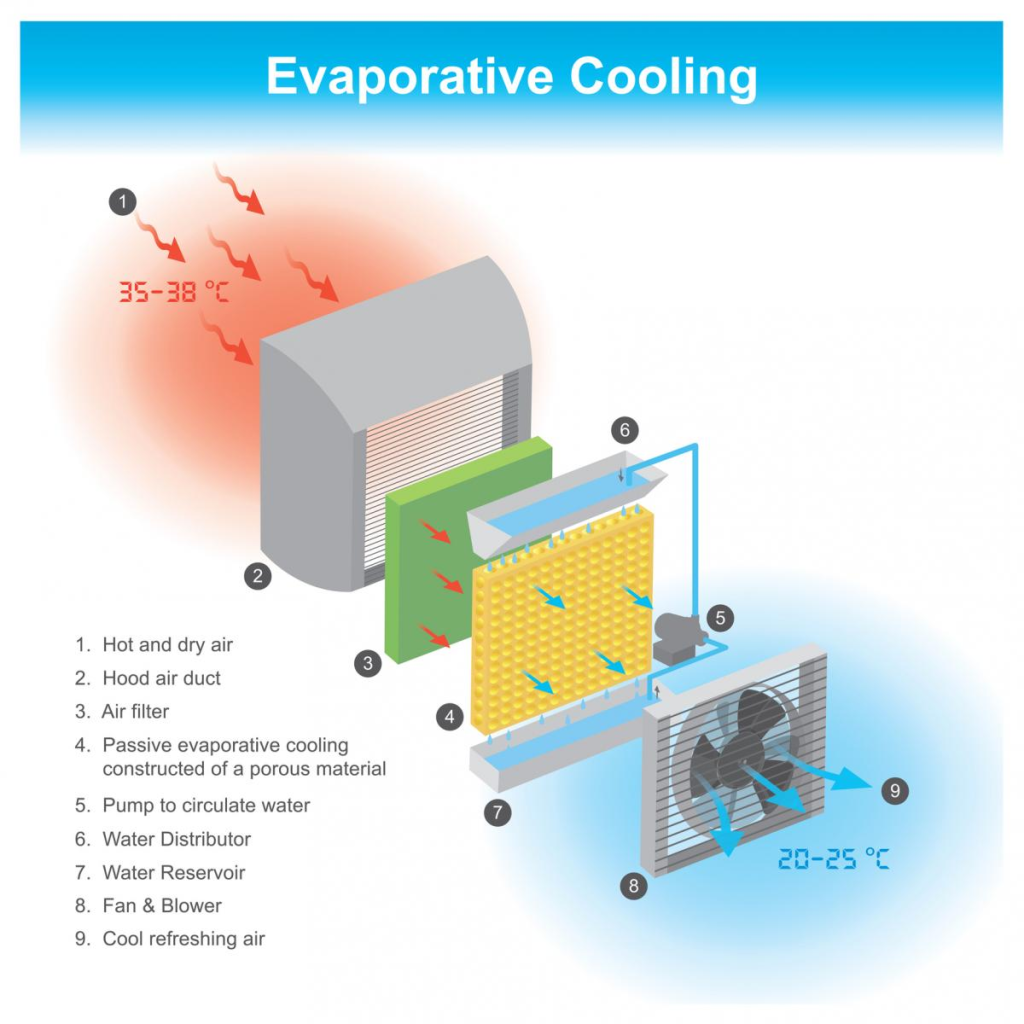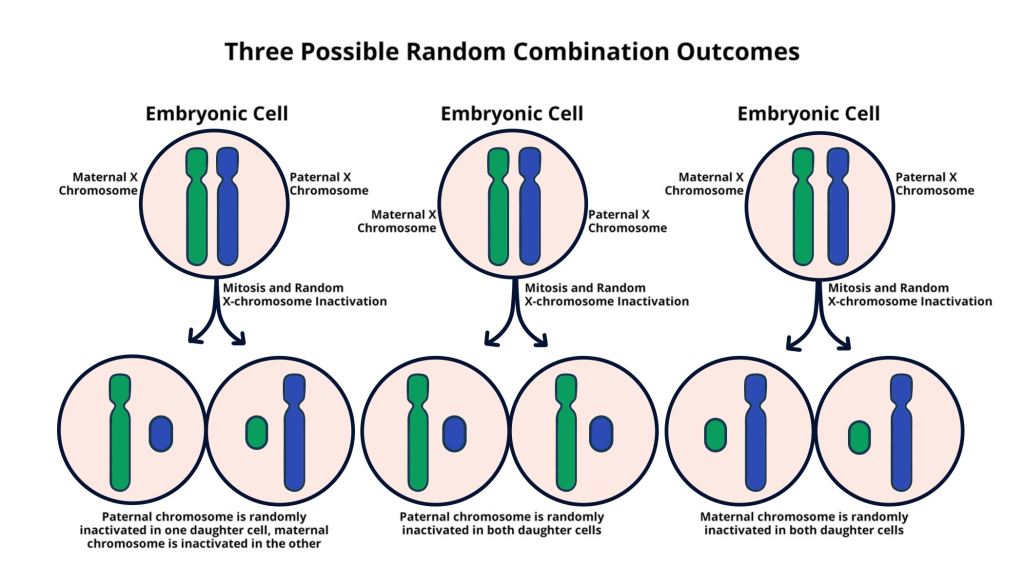
Cooling technology is evolving rapidly as our planet faces unprecedented climate changes, demanding efficient solutions to meet rising temperature needs. Innovations in energy-efficient cooling are paramount to combat the alarming statistic that air conditioning currently contributes to 4% of global greenhouse gas emissions, a figure that could skyrocket with a predicted 40% rise in demand by 2030. Harvard startup Trellis Air stands at the forefront of this transformation, with its groundbreaking dehumidification systems that operate using a novel membrane technology. This technology not only minimizes energy usage but also positions itself as a game-changer in the battle against climate change. As we strive for sustainability, Trellis Air represents a vital leap toward reducing our carbon footprint while maintaining comfortable living and working environments.
The realm of climate control is witnessing a significant shift, with advanced air conditioning alternatives and innovative cooling paradigms emerging to address environmental concerns. As traditional air conditioning systems contribute significantly to greenhouse gas emissions, there is an urgent need for modern approaches that prioritize efficiency and sustainability. Dehumidification processes, such as those pioneered by Trellis Air, offer refreshing solutions that effectively reduce energy consumption while enhancing indoor air quality. By harnessing cutting-edge technology originally developed at Harvard, these methods reflect a commitment to not only improving comfort but also lowering energy-related emissions. As we explore these advancements, it’s clear that a new era of environmentally conscious cooling systems is on the horizon.
Revolutionizing Cooling Technology with Trellis Air
As climate change intensifies, the demand for effective cooling technology is skyrocketing. Traditional air conditioning systems, which rely heavily on refrigerants, contribute to approximately 4 percent of global greenhouse gas emissions. This startling statistic highlights a pressing need for innovation in cooling methods. Trellis Air, a startup emerging from Harvard, is leading the charge with its groundbreaking membrane technology designed to dry and cool air more efficiently. The company’s approach not only addresses the soaring energy demands of air conditioners but also mitigates their environmental impact.
Trellis Air’s innovative system works similarly to a coffee filter, utilizing a special membrane to selectively remove moisture from the air, thereby reducing reliance on energy-intensive traditional air conditioning methods. This technology promises to enhance the efficiency of cooling systems dramatically, potentially reducing energy consumption by a significant margin. As buildings continue to require innovative solutions to combat rising temperatures and increased humidity, Trellis Air’s contribution to cooling technology represents a pivotal shift towards more sustainable practices in environmental management.
The Importance of Energy-Efficient Cooling Systems
In the face of unprecedented heat rise, energy-efficient cooling systems have become essential for maintaining comfortable living and working environments. Energy-efficient cooling not only lessens the financial burden on consumers but also plays a crucial role in decreasing our carbon footprint. As we anticipate a 40% surge in air conditioning demand by 2030, the call for systems that consume less energy while providing optimal cooling becomes increasingly urgent. This is where cutting-edge technologies, such as those developed by Trellis Air, become invaluable.
These energy-efficient cooling solutions aim to redefine how we approach air conditioning, emphasizing smarter use of energy and minimizing unnecessary waste. By employing advanced technologies and innovative designs, Trellis Air is set to deliver a product that not only fulfills the growing demand for cooling but does so in an environmentally friendly manner. The integration of methods that reduce greenhouse gas emissions within the HVAC industry is not just beneficial; it is imperative for creating a sustainable future.
Addressing Greenhouse Gas Emissions in Cooling Systems
Current air conditioning systems are silent contributors to climate change, releasing significant amounts of greenhouse gases into the atmosphere. With up to 4 percent of global emissions attributed to these cooling systems, the urgent need for environmentally conscious alternatives has never been clearer. Innovative startups like Trellis Air are at the forefront of this movement, developing solutions that promise to drastically reduce emissions associated with cooling.
The team at Trellis Air cites their unique approach to dehumidification as a key factor in minimizing greenhouse gas outputs. Unlike conventional air conditioners that often generate excess heat while cooling, Trellis Air’s system is designed to work efficiently, thereby producing less waste overall. This innovation not only aligns with global goals for reducing emissions but also encourages consumers and businesses to invest in greener alternatives. The transition to more sustainable cooling technology is essential to combating climate change at its core.
Innovative Dehumidification Systems for Modern Needs
Dehumidification systems are vital for maintaining air quality and comfort in both residential and commercial environments. However, traditional dehumidifiers are often energy-hungry devices that can exacerbate the very problems they aim to mitigate. Trellis Air’s innovative membrane technology presents a smarter alternative to conventional dehumidification methods, combining efficiency with effectiveness in moisture removal.
This new class of dehumidifiers strives to eliminate unnecessary energy consumption by employing a revolutionary design that mimics natural filtration processes. By focusing on both comfort and energy efficiency, Trellis Air is reimagining how we think about dehumidification within the context of climate change and sustainability. As they work towards commercializing their technology, the potential for these systems to drastically reshape air quality management is substantial.
Collaborative Innovation: The Heart of Trellis Air
The development of Trellis Air’s unique technology was made possible through collaborative efforts among various teams at Harvard. At the intersection of science, engineering, and architectural expertise, researchers worked together to pioneer a novel approach to cooling that addresses both efficiency and environmental sustainability. This spirit of collaboration is critical in overcoming complex challenges associated with modern air conditioning technology.
By leveraging advancements from diverse fields, the Trellis Air team has been able to integrate raw scientific insight with practical engineering solutions to create a prototype that challenges the status quo. Such interdisciplinary partnerships not only foster innovation but also inspire a new generation of technologies that are more effective at minimizing our carbon footprint while maximizing comfort in our built environments.
The Future of Air Conditioning with Trellis Air
As the climate crisis continues to escalate, the air conditioning industry is at a tipping point, requiring immediate and significant transformation. Trellis Air’s promising technology provides a glimpse into a future where cooling systems operate with minimal energy consumption and reduced environmental impact. The company’s plan to commercialize their innovative approach suggests a new era for air conditioning, one that prioritizes both performance and planetary health.
By establishing partnerships and conducting real-world testing, Trellis Air aims to demonstrate the viability of their system on a larger scale. With projections indicating skyrocketing cooling needs by 2030, their technology seeks to redefine the market, offering solutions that not only meet growing demands but also contribute to global efforts in reducing greenhouse gas emissions. The future of air conditioning is bright and green, and Trellis Air is leading the way.
Funding Innovation in Energy-Efficient Cooling Solutions
Securing funding for innovative technologies is crucial for turning groundbreaking ideas into market-ready solutions. Trellis Air’s journey has been supported by various funding sources, including the U.S. Department of Energy and Harvard’s Office of Technology Development. These investments not only enhance the research and development process but also validate the potential impact of their energy-efficient cooling solutions.
Continued funding enables Trellis Air to refine their technology and conduct essential field studies that provide concrete evidence of its effectiveness. As they move towards commercialization, the financial backing from both public and private sources will play a pivotal role in ensuring their success and helping to pave the way for a more sustainable future in cooling technology. This financial support reflects a growing awareness of the necessity for innovative solutions in the face of climate change.
Testing and Validation of Trellis Air’s Technology
Before bringing their technology to market, Trellis Air has invested considerable resources into rigorous testing and validation to ensure their cooling system performs as intended under real-world conditions. Pilot projects, such as those conducted in collaboration with the Department of Energy, showcase the viability of the membrane technology in various climates. These tests not only serve to validate the efficiency of their system but also collect vital data necessary for further improvement.
The successful completion of these pilot projects underscores the capability of Trellis Air’s innovative dehumidification system to perform effectively in diverse environments. By gathering empirical evidence on efficiency and performance, Trellis Air aims to build confidence among stakeholders and potential investors, signaling that their technology is not just theoretical, but a practical solution ready for widespread adoption.
Commercial Routes for Trellis Air’s Revolutionary Technology
Trellis Air sees multiple pathways for bringing their innovative technology to market, each addressing different aspects of cooling needs. Their approach to integrate their dehumidification system with existing air conditioning units forms a cornerstone of their commercial strategy, enhancing efficiency for users globally. By focusing on industrial applications, they aim to replace outdated desiccant systems with a more environmentally friendly alternative.
Recognizing the potential for widespread adoption across various sectors, Trellis Air’s commercialization strategy aligns with larger goals for energy efficiency and sustainability in building management. Their vision for the future embraces not only reducing energy consumption but also minimizing the overall carbon footprint associated with cooling technology. As they navigate these commercial routes, Trellis Air stands poised to make a significant impact on the HVAC industry.
Frequently Asked Questions
What is Trellis Air and how does it relate to energy-efficient cooling?
Trellis Air is a cutting-edge startup founded at Harvard University that focuses on developing innovative energy-efficient cooling solutions. Their technology utilizes a unique membrane system to dehumidify and cool air more effectively than traditional air conditioning methods, significantly reducing energy consumption and greenhouse gas emissions.
How do dehumidification systems improve energy-efficient cooling?
Dehumidification systems, like those developed by Trellis Air, help improve energy-efficient cooling by effectively removing moisture from the air without using excessive energy. Traditional air conditioners tend to use a lot of energy to cool air and dehumidify it simultaneously; however, Trellis Air’s technology operates separately to enhance efficiency and reduce the overall energy demand.
What are the greenhouse gas emissions associated with traditional cooling technology?
Traditional cooling technology, particularly air conditioning systems, is responsible for approximately 4 percent of global greenhouse gas emissions. This statistic highlights the significant environmental impact of cooling systems, as these emissions are twice those related to air travel. Transitioning to energy-efficient cooling solutions like Trellis Air aims to mitigate this issue.
How does Trellis Air’s membrane technology work for cooling buildings?
Trellis Air’s membrane technology works by acting similarly to a coffee filter, separating water vapor from the air while minimizing energy consumption. This innovative approach enables more efficient cooling and dehumidification without relying on harmful refrigerants typically found in conventional air conditioning systems.
What role does Harvard innovation play in the development of Trellis Air?
Harvard innovation has been pivotal in the development of Trellis Air, as the startup emerged from collaborative research and engineering breakthroughs at Harvard. The team’s advanced research in materials science and engineering facilitated the creation of a novel dehumidification system aimed at significantly improving energy-efficient cooling while reducing greenhouse gas emissions.
Why is energy-efficient cooling technology increasingly important in today’s climate?
Energy-efficient cooling technology is becoming increasingly important as global temperatures rise and air conditioning demand is projected to increase by up to 40 percent by 2030. The growing need for cooling solutions necessitates more sustainable and efficient technologies like those produced by Trellis Air to combat the rising energy use and associated greenhouse gas emissions.
How can integrated cooling systems benefit from Trellis Air’s technology?
Integrated cooling systems can benefit from Trellis Air’s technology by incorporating their innovative membrane as a pre-drying module, which helps air conditioners operate more efficiently. This integration can lead to significant energy savings and a reduction in the carbon footprint associated with traditional air conditioning, ultimately promoting more energy-efficient cooling solutions worldwide.
| Key Point | Details |
|---|---|
| Trellis Air Development | Trellis Air is a Harvard startup utilizing a novel membrane technology for energy-efficient cooling. |
| Environmental Impact | Air conditioning accounts for 4% of global greenhouse gas emissions, highlighting an urgent need for sustainable solutions. |
| Cooling Demand Increase | Cooling demand is anticipated to rise by 40% by 2030 due to climate change. |
| Current Technology Limitations | Most existing cooling systems rely on outdated vapor-compression technology. |
| Innovative Approach | The new system separates moisture from air using a membrane, similar to a coffee filter, reducing energy use. |
| Commercialization Goals | Trellis Air plans to retrofit existing air conditioning units to improve efficiency and lower energy consumption. |
| Research Collaboration | The project involves collaboration across Harvard’s engineering, architecture, and materials science departments. |
| Field Testing | Prototype systems have been tested in harsh climates like Miami and Boston to validate the technology. |
Summary
Cooling technology plays a crucial role in addressing global warming and energy consumption challenges. As the demand for cooling systems rises due to climate change, innovative solutions like those developed by Trellis Air present a viable pathway to reduce energy use and emissions. With its membrane technology, Trellis Air not only promises to enhance the efficiency of traditional air conditioning units but also strives to transform the industry towards a more sustainable future. This advancement highlights the pressing need to adopt cutting-edge cooling technologies to mitigate the environmental impact associated with rising temperatures.


